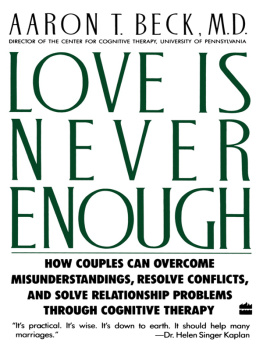Aaron Berkowitz - One by One by One: Making a Small Difference Amid a Billion Problems
Here you can read online Aaron Berkowitz - One by One by One: Making a Small Difference Amid a Billion Problems full text of the book (entire story) in english for free. Download pdf and epub, get meaning, cover and reviews about this ebook. year: 2020, publisher: HarperCollins, genre: Detective and thriller. Description of the work, (preface) as well as reviews are available. Best literature library LitArk.com created for fans of good reading and offers a wide selection of genres:
Romance novel
Science fiction
Adventure
Detective
Science
History
Home and family
Prose
Art
Politics
Computer
Non-fiction
Religion
Business
Children
Humor
Choose a favorite category and find really read worthwhile books. Enjoy immersion in the world of imagination, feel the emotions of the characters or learn something new for yourself, make an fascinating discovery.
- Book:One by One by One: Making a Small Difference Amid a Billion Problems
- Author:
- Publisher:HarperCollins
- Genre:
- Year:2020
- Rating:5 / 5
- Favourites:Add to favourites
- Your mark:
- 100
- 1
- 2
- 3
- 4
- 5
One by One by One: Making a Small Difference Amid a Billion Problems: summary, description and annotation
We offer to read an annotation, description, summary or preface (depends on what the author of the book "One by One by One: Making a Small Difference Amid a Billion Problems" wrote himself). If you haven't found the necessary information about the book — write in the comments, we will try to find it.
Aaron Berkowitz: author's other books
Who wrote One by One by One: Making a Small Difference Amid a Billion Problems? Find out the surname, the name of the author of the book and a list of all author's works by series.
One by One by One: Making a Small Difference Amid a Billion Problems — read online for free the complete book (whole text) full work
Below is the text of the book, divided by pages. System saving the place of the last page read, allows you to conveniently read the book "One by One by One: Making a Small Difference Amid a Billion Problems" online for free, without having to search again every time where you left off. Put a bookmark, and you can go to the page where you finished reading at any time.
Font size:
Interval:
Bookmark:
In memory of my father,
who taught me to be good and do good
To Michelle, Anne, Martineau, Ian, Hermide, Kerling, Pre Eddy, and Franois,
my partners in health
To Nina,
my partner in life
Hallie had been working to save lives. Not everything all at once, as Amy and so many others believed, but one by one by one... No impulse to reinvent the world from the bottom up, no acts of revolutionary defiance, but a commitment to doing good in the broken world she belonged to, a plan to spend her life helping others, which was not a political act so much as a religious act, a religion without religion or dogma, a faith in the value of the one and the one and the one... and while Amy and a host of others would have argued that people were sick because society was sick and helping them adjust to a sick society would only make them worse, Hallie would have answered, Please, go ahead and improve society if you can, but meanwhile people are suffering, and I have a job to do.
Paul Auster, 4321
Our mission is to provide a preferential option for the poor in health care. By establishing long-term relationships with sister organizations based in settings of poverty, Partners In Health strives to achieve two overarching goals: to bring the benefits of modern medical science to those most in need of them and to serve as an antidote to despair.
We draw on the resources of the worlds leading medical and academic institutions and on the lived experience of the worlds poorest and sickest communities. At its root, our mission is both medical and moral. It is based on solidarity, rather than charity alone.
When our patients are ill and have no access to care, our team of health professionals, scholars, and activists will do whatever it takes to make them welljust as we would do if a member of our own families or we ourselves were ill.
Partners In Health, mission statement
I present to you patient Janel, a 23-year-old male student with no prior medical history, born and currently living in Savanette, presenting for evaluation of headaches evolving over several months, a sense of vertigo when he stands, and difficulty walking.
S o began an email that would intertwine the lives of Dr. Martineau Louine, the patient he described, and me. Most patients in need of neurologic care in Haiti go to primary care doctors like Martineau. Primary care doctors in Haiti cant simply refer patients to a neurologist the way they would in the US or other wealthy countries, since the only neurologist in Haitione for a country of more than ten million citizenspractices in the capital city of Port-au-Prince.
Port-au-Prince is only about ninety miles from Savanette, but the trip takes close to four hours. Much of the journey is on dirt roads that become impassable mud in the rainy season. The rest of the way is on paved but treacherous winding mountain roads, all the more treacherous when riding packed into the back of a pickup-truck taxi called a taptap, or balanced in groups of two or three on the back of a motorcycle behind the driver. The cost of transportation to make this triplet alone the cost of an appointment with a specialistis beyond the means of most people in Haiti. More than half the population lives on less than two dollars a day, and about a quarter on less than one dollar a day. So patients go to the closest doctor they can find. In poor, remote rural communities like Savanette, that may be a young doctor who has just finished medical school, practicing alone and without supervisiona doctor who has gone to medical school in a country with no neurologists to teach them about the diagnosis and treatment of neurologic conditions like stroke, seizure, or Parkinsons disease, let alone how to approach a more complex patient like Janel.
When I received Martineaus email about Janel in September 2014, I was just a few months out of my neurology residency training and had recently begun my first job as a neurologist at Brigham and Womens HospitalBrigham for shortin Boston. At Brigham, Im one of more than 100 neurologists on staff, and Brigham is one of several hospitals with large neurology departments in Boston, a city with a population of less than 700,000. One of my Brigham colleagues who worked in Haiti had asked me if I could help provide neurology training for Haitian doctors through the Boston-based non-governmental organization Partners In Health (known in the field as PIH). Founded by global health luminaries Paul Farmer, Ophelia Dahl, and Jim Yong Kim, PIH had begun its pioneering work providing healthcare to the worlds poorest patients in Haiti, later expanding to work in Peru, Rwanda, Malawi, Mexico, Lesotho, Russia, Navajo Nation, Liberia, and Sierra Leone.
So I started going to Haiti to teach neurology for two weeks at a time, first yearly, then a few times each year. Martineau had identified himself as an eager and skilled collaborator. He began asking that all patients with neurologic conditions who came to PIHs recently opened Hpital Universitaire de Mirebalaisthe largest hospital in central Haitibe referred to him. When I was in Haiti working with PIH, Martineau and I saw patients together. In between visits, he emailed me about patients he found challenging to diagnose or treat, like Janel.
Martineaus email continued:
On physical examination, the patient had increased reflexes most notable in the lower extremities. There were trembling movements of his right arm and right leg that affected his walking. The tremor in his right hand affected his coordination when he moved his finger from his nose to my hand.
Martineau had attached a shaky one-and-a-half-minute cell phone video to his email. In the video, Janel is sitting on an examination table, his hands resting on his lap. Only his torso and legs are visible. Hes dressed in a white button-down shirt with thin vertical purple stripes, dark blue pants, and shiny black dress shoes that dangle motionless over a white tile floor. An electronic monitor beeps continuously in the background from another clinic room. Martineaus slender arms enter the frame in a starched white dress shirt, holding his reflex hammer. His stethoscope dangles from around his neck, swinging back and forth between his arms like a pendulum as he tests Janels reflexes. Lage men an, lage men an, Martineau says (Relax your hands, relax your hands) as he hits each elbow crease in turn with his reflex hammer, sending Janels hands leaping off his lap. Then Martineau hits just below Janels kneecaps, causing his legs to kick out briskly. In the last moments of the video, Martineau asks Janel to reach his hands forward. A subtle, rapid tremor emerges in Janels right hand, making it quiver briefly like a hummingbirds wing. Then it stops. Okay, Martineau says, and the video ends.
For neurologists, the physical examination holds important clues to the cause of a patients symptoms. While the stethoscope allows doctors to listen to the activities of the heart and lungs, its the patterns of weakness, abnormal movements, reflexes, and other elements of the physical examination that neurologists observe to determine the precise site of disease within the nervous system: is the problem in the brain, the spinal cord, the nerves, the muscles? The jumpy reflexes Martineau demonstrated in the video were a clue that his patients problem was in the central nervous systemthe brain or spinal cord. The tremor that appeared with movement and disappeared with rest suggested dysfunction of the back of the brain in a part called the cerebellum.
During my first visits to Haiti, the bedside examination was all we had in neurology. Lab testing was limited, and the single CT scanner in the capital city was too expensive and too far away for most patients to access. My colleagues and I struggled to try to help many patients for whom we felt that if only we had a CT scan or an MRI, we might be able to figure out what was wrong and how to treat them. Examining a patient might lead us to conclude that there was a problem in the brain, but what was it? A stroke? An infection? A tumor? Without a scan, it was often impossible to determine.
Font size:
Interval:
Bookmark:
Similar books «One by One by One: Making a Small Difference Amid a Billion Problems»
Look at similar books to One by One by One: Making a Small Difference Amid a Billion Problems. We have selected literature similar in name and meaning in the hope of providing readers with more options to find new, interesting, not yet read works.
Discussion, reviews of the book One by One by One: Making a Small Difference Amid a Billion Problems and just readers' own opinions. Leave your comments, write what you think about the work, its meaning or the main characters. Specify what exactly you liked and what you didn't like, and why you think so.










